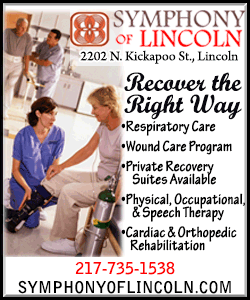|
Peroxide ingestion,
promoted by Alternative Medicine, can be deadly
 Send a link to a friend
Send a link to a friend
[February 04, 2017]
WASHINGTON
— High-concentration peroxide, sometimes promoted in alternative
medicine circles for cleanses or as a so-called “natural cure,” can lead
to numerous life-threatening ailments and death itself, according to a
paper published online yesterday in Annals of Emergency Medicine
(“Outcomes Following High Concentration Peroxide Ingestions”).
|
|
 “Ingesting high-concentration peroxide can cause embolisms affecting
the cardiac, respiratory and neurological systems, leading to
permanent disability or death,” said lead study author Benjamin
Hatten, MD, MPH, of the University of Colorado School of Medicine in
Aurora, Colo. “Though touted by the alternative and complementary
medicine communities as ‘super water,’ peroxide should not be
ingested for any reason. Because there are also industrial uses,
some ingestions have been accidental because of its resemblance to
water.” “Ingesting high-concentration peroxide can cause embolisms affecting
the cardiac, respiratory and neurological systems, leading to
permanent disability or death,” said lead study author Benjamin
Hatten, MD, MPH, of the University of Colorado School of Medicine in
Aurora, Colo. “Though touted by the alternative and complementary
medicine communities as ‘super water,’ peroxide should not be
ingested for any reason. Because there are also industrial uses,
some ingestions have been accidental because of its resemblance to
water.”
Dr. Hatten examined 10 years of poison control records for
high-concentration peroxide ingestion (concentration strength of 10
percent or greater). Almost 14 percent (13.9 percent) of reported
cases had embolic events and 6.8 percent of cases either died or
exhibited continued disability. Life-threatening ailments associated
with high-concentration peroxide ingestion include seizure, altered
mental status, respiratory distress, stroke, pulmonary embolism and
heart attack. Patients treated early with hyperbaric oxygen had
improved outcomes. Caustic injuries were rare and routine endoscopy
was not beneficial.
“This product is meant to be used by the dropper and then diluted,
yet we encountered many cases where it was stored at full strength
in a clear vessel in the refrigerator,” said Dr. Hatten.
[to top of second column] |

“This is a caustic liquid, and as with many poison prevention efforts, we
recommend keeping this product in its original container and adding both
child-resistant capping and a colorizing agent to reduce the possibility of
accidental ingestion.”
Annals of Emergency Medicine is the peer-reviewed scientific journal for the
American College of Emergency Physicians, the national medical society
representing emergency medicine. ACEP is committed to advancing emergency care
through continuing education, research, and public education. Headquartered in
Dallas, Texas, ACEP has 53 chapters representing each state, as well as Puerto
Rico and the District of Columbia. A Government Services Chapter represents
emergency physicians employed by military branches and other government
agencies. For more information, visit www.acep.org.
[American College of Emergency
Physicians] |